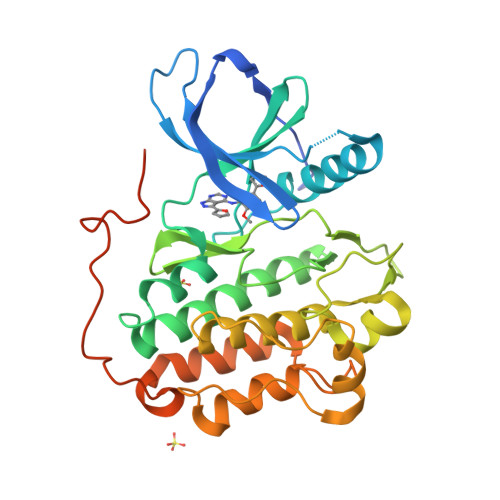Overcoming resistance to HER2 inhibitors through state-specific kinase binding.
Novotny, C.J., Pollari, S., Park, J.H., Lemmon, M.A., Shen, W., Shokat, K.M.(2016) Nat Chem Biol 12: 923-930
- PubMed: 27595329
- DOI: https://doi.org/10.1038/nchembio.2171
- Primary Citation of Related Structures:
5JEB - PubMed Abstract:
The heterodimeric receptor tyrosine kinase complex formed by HER2 and HER3 can act as an oncogenic driver and is also responsible for rescuing a large number of cancers from a diverse set of targeted therapies. Inhibitors of these proteins, particularly HER2, have dramatically improved patient outcomes in the clinic, but recent studies have demonstrated that stimulating the heterodimeric complex, either via growth factors or by increasing the concentrations of HER2 and HER3 at the membrane, significantly diminishes the activity of the inhibitors. To identify an inhibitor of the active HER2-HER3 oncogenic complex, we developed a panel of Ba/F3 cell lines suitable for ultra-high-throughput screening. Medicinal chemistry on the hit scaffold resulted in a previously uncharacterized inhibitor that acts through preferential inhibition of the active state of HER2 and, as a result, is able to overcome cellular mechanisms of resistance such as growth factors or mutations that stabilize the active form of HER2.
Organizational Affiliation:
Howard Hughes Medical Institute, University of California San Francisco, San Francisco, California, USA.


















